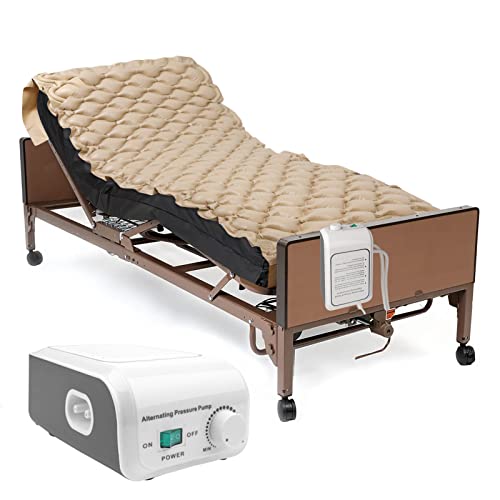
There are many bedsore treatments available for different stages of the condition. The first and most important treatment is prevention. The earliest signs of a bedsore are usually mild and may be treated with antibiotic cream. A more severe case can result in a shallow crater that exposes muscle and bone. This can lead to infection, so it’s crucial to find the best bedsore treatment before the condition worsens.
Early warning signs of a bedsore include unusual changes in skin color and texture. The skin may feel warmer or cooler than usual. The affected area can also become painful, which can be due to pressure. The treatment for bedsore depends on the stage of the disease and its severity. If it is not cured immediately, it may turn into a chronic wound. Fortunately, there are some effective and safe bedsore treatments available.
Treatments for a bedsore should take the pressure off the affected area. If the condition has advanced to the stage of a Stage 4 bedsore, a surgeon will have to remove a layer of skin and begin reconstructive surgery. These treatments can be effective for treating a stage 1 or 2 bedsore, but they may not be appropriate for patients with more serious bed sores. In such cases, the only effective bedsore treatment is debridement.
The first stage of bedsore treatment is prevention. When spotted early, it is possible to treat or prevent a bedsore. However, when symptoms occur late, it may become a recalcitrant wound and require surgery. Fortunately, there are several effective bedsore treatments available to alleviate the symptoms and improve your health. If the bedsore is severe, treatment options will depend on your specific condition and your ability to bear the pressure.
If your bedsore is stage one, treatment options may be less effective. A more effective treatment option is to get an entirely new mattress. In addition to the above two steps, you should consult with your doctor before beginning any treatment. If the bedsore is not treated, the condition can progress to a stage 4 or more. The goal of treating a bedsore with a surgical option is to eliminate the ulcer and rebuild the skin.

A bedsore treatment may involve the application of a topical ointment. An ointment can help treat ulcers and minimize the risk of spread and redevelopment. It also stimulates the growth of new skin cells and prevents the ulcer from spreading and redeveloping. In some cases, the doctor may order blood tests. After the ointment is applied, a special dressing is applied to keep the area moist and protected from infection.
In the case of stage 1 bedsores, treatment will be simple. Treatment will vary depending on the severity of the bedsore. Basic care includes washing and drying the affected area and applying a bandage to protect it from moisture and infection. More extensive treatment of bedsores may require surgery. Although there are many basic treatments for pressure ulcers, there are many treatment options for pressure ulcers.
Initial treatment for pressure ulcers is aimed at reducing pressure on the affected area. In addition to using medications to relieve pain, they also focus on ensuring the patient’s comfort. Infected bedsores may require surgery. To treat a larger pressure ulcer, your doctor may recommend a more invasive procedure. Besides antibiotics, these are the most common treatments for bedsores.
In the initial stages, bedsores are usually unmistakably recognized. Your doctor Diann Alatas may order blood tests to determine your overall health and also test for unusual bacteria and fungi. A sample of the affected area may also be cultured to determine if you have cancer. If a bedsore is diagnosed in the early stages, it is treated in two stages: the first stage is the most effective. The second stage is the most serious type of treatment for bedsores. The doctor will often remove the affected skin to relieve pressure and speed healing.
A bedsore can become a serious problem. This may be a sign of a serious illness. If you are suffering from a bedsore, you should take action as soon as possible. Surgery can help reduce the risk of infection, improve the appearance of the ulcer, and prevent fluid loss. It may also reduce your risk of developing cancer in the future. Treatment depends on the type of pressure sore, but the first few steps are vital.